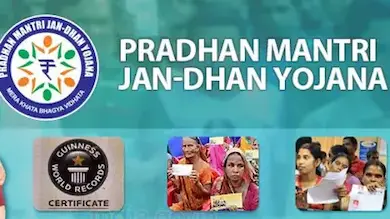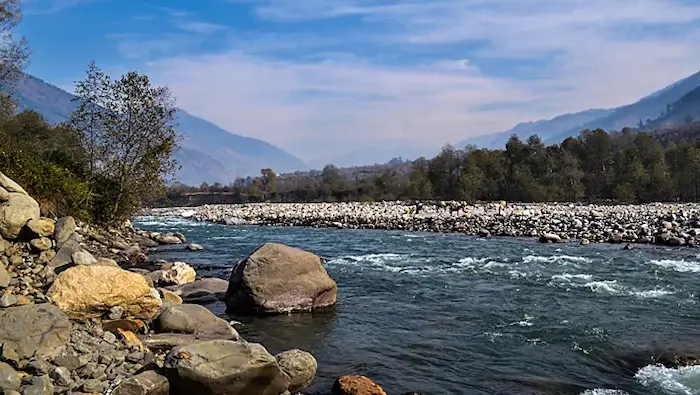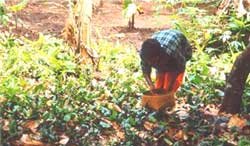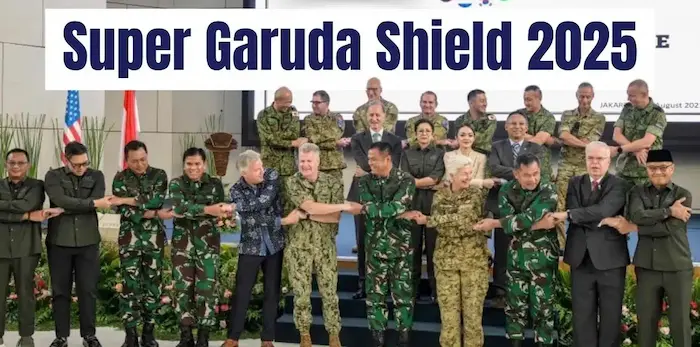1. Pradhan Mantri Jan Dhan Yojana (PMJDY): A Global Model of Financial Inclusion – Economy

Why in News?
The Pradhan Mantri Jan Dhan Yojana (PMJDY), launched on 28th August 2014, has emerged as a global model for financial inclusion. As it nears its 12th year, PMJDY continues to drive economic empowerment, poverty alleviation, and social equality through universal access to banking services.
Key Features and Objectives
- Launched by the Government of India to bring the unbanked population into the formal financial system.
- Focus on marginalized and economically weaker sections of society.
- Goal: Universal access to financial services like savings & deposit accounts, remittance, credit, insurance, and pension.
Major Achievements
- Account Penetration:
- In 2014, ~7.5 crore households lacked bank accounts.
- As of 2024:
- Nearly 100% households have bank accounts.
- 90%+ adults are financially included.
- 89% of individuals aged 15+ have accounts (World Bank Findex 2024).
- 94.65% of adults own a bank account (NSS 2022-23).
- Women Empowerment:
- 56.2 crore accounts opened since 2015.
- 56% accounts held by women – boosting gender inclusion.
- Savings Mobilization:
- Total deposits in PMJDY accounts: Rs. 2.68 lakh crore (17x rise since 2015).
- Banking Network Expansion:
- 16.2 lakh+ Bank Mitras providing doorstep services.
- 99.9% of villages have banking outlets within 5 km radius.
Wider Impact and Significance
- Direct Benefit Transfer (DBT): Enabled efficient delivery of subsidies and welfare payments.
- Critical role during demonetization and COVID-19 relief efforts.
- Digital and Financial Products Integration:
- Over 38.7 crore RuPay cards issued.
- Access to micro-insurance (PMJJBY, PMSBY) and pension schemes (Atal Pension Yojana).
- Promotes digital payments and savings behaviour.
Current and Future Focus
- Move from account creation to account usage.
- Improve financial literacy, encourage active transactions, and link with micro-credit and insurance.
- Utilize AI and Natural Language Processing to enable voice-based banking, especially in remote areas.
- Government’s Financial Inclusion Saturation Drive aims to:
- Update KYC.
- Reduce inactive accounts.
- Expand insurance and pension coverage.
Global Recognition
- PMJDY is the world’s largest financial inclusion initiative.
- Recognized as a global model for inclusive governance and economic empowerment.
Exam Connect – Possible Questions
Prelims
1. The Pradhan Mantri Jan Dhan Yojana (PMJDY) primarily aims to:
A. Promote foreign investments in rural India
B. Provide free education to underprivileged children
C. Ensure access to financial services for all households
D. Create employment opportunities in the public sector
Answer: C. Ensure access to financial services for all households
2. Which of the following statements is/are correct regarding PMJDY?
1. Over 50% of PMJDY accounts are held by women.
2. It provides access to micro-insurance and pension products.
3. Only urban households are eligible under this scheme.
A. 1 and 2 only
B. 2 and 3 only
C. 1 and 3 only
D. All three
Answer: A. 1 and 2 only
Mains
1. Discuss the role of the Pradhan Mantri Jan Dhan Yojana (PMJDY) in promoting financial inclusion in India. How has the scheme evolved to address challenges related to economic inequality and welfare delivery? (250 words)
2. As PMJDY completes over a decade, critically analyze its impact on women empowerment, rural financial inclusion, and the effectiveness of Direct Benefit Transfers in India. (250 words)
2. National Designated Authority (NDA) for Carbon Emissions Trading Regime – Polity

Why in News?
The Ministry of Environment, Forest and Climate Change (MoEFCC) has recently established a National Designated Authority (NDA) as a vital institutional mechanism to operationalize a carbon emissions trading regime, aligning with Article 6 of the 2015 Paris Agreement.
Key Features of the NDA
- Established under: Provisions of Article 6 of the Paris Agreement (2015).
- Purpose: Facilitate carbon markets and oversee emission reduction trading activities.
- Structure:
- A 21-member committee, chaired by the Secretary, MoEFCC.
- Includes members from key ministries: External Affairs, Power, Renewable Energy, Steel, etc.
- Function: Acts as the nodal agency for regulating and approving carbon credit projects.
Understanding Article 6 of the Paris Agreement
- Passed during COP29 in Baku, Azerbaijan.
- Provides the framework for voluntary cooperation among countries via carbon markets.
- Allows nations to trade emission reductions (known as Internationally Transferred Mitigation Outcomes – ITMOs) to meet their Nationally Determined Contributions (NDCs).
Key Responsibilities of NDA
- Approve Projects: Evaluate and authorize carbon reduction projects eligible for trading.
- Align Projects with National Goals: Modify and assess emission-reducing activities to align with India’s Sustainable Development Goals (SDGs).
- Recommend Trading Activities: Identify and recommend initiatives that can generate tradable emission reduction units.
- Ensure Transparency: Oversee environmental integrity and avoid double counting of carbon credits.
India’s Nationally Determined Contributions (NDCs)
Under the Paris Agreement, India has committed to:
- Reduce emission intensity of GDP by 45% by 2030 (from 2005 levels).
- Achieve 50% electric power capacity from non-fossil fuel sources by 2030.
- Create additional carbon sink of 2.5 to 3 billion tonnes of CO₂ equivalent through afforestation.
Significance of NDA for India
- Enables India to participate in international carbon markets under the Paris Agreement.
- Helps in monetizing carbon reduction projects, attracting foreign investments in clean energy.
- Encourages low-carbon development pathways while ensuring national sustainability priorities.
- Strengthens India’s climate diplomacy and enhances its credibility on global environmental governance platforms.
Exam Connect – Possible Questions
Prelims
1. The National Designated Authority (NDA), recently established by the Government of India, is related to:
A. Defence manufacturing approvals
B. Carbon emissions trading and climate governance
C. Medical education quality control
D. Intellectual property rights enforcement
Answer: B. Carbon emissions trading and climate governance
2. Article 6 of the Paris Agreement primarily deals with:
A. Gender equality in climate policy
B. Funding of adaptation strategies
C. Establishing carbon markets and international emission trading
D. Loss and damage financing for developing nations
Answer: C. Establishing carbon markets and international emission trading
Mains
1. Discuss the role of the National Designated Authority (NDA) in enabling India’s transition to a carbon trading regime. How does it align with India’s climate commitments under the Paris Agreement? (250 words)
2. India’s shift towards carbon markets represents a strategic blend of climate diplomacy and economic innovation. Examine the challenges and opportunities in implementing a robust carbon trading framework in the Indian context. ( 250 words)
3. ISRO Conducts Air Drop Test for Gaganyaan Mission – Science & Technology

Why in News?
The Indian Space Research Organisation (ISRO) has successfully conducted its first Integrated Air Drop Test (IADT-I) — a key milestone in preparation for the Gaganyaan human spaceflight mission. The test was designed to validate the parachute-based deceleration and splashdown safety system of the crew module.
Key Takeaways
- The test simulated the final phase of re-entry, i.e., safe return and splashdown of the crew capsule.
- A five-tonne uncrewed dummy crew module was dropped from a height of 3 km using a helicopter.
- The goal: To evaluate parachute deployment, deceleration control, and capsule orientation during descent and splashdown.
Details of IADT-I
| Aspect | Details |
|---|---|
| Test Name | Integrated Air Drop Test – IADT-I |
| Altitude of Drop | ~3,000 metres |
| Capsule Weight | Approx. 5 tonnes |
| Parachute Function | Sequential deployment to reduce speed to ~8 m/s before splashdown |
| Objective | Test safety systems for splashdown, orientation, and recovery |
| Limitations | Cannot simulate high-speed re-entry conditions |
Purpose and Significance
- Simulates abort and landing scenarios during emergencies or mission completion.
- Ensures astronaut safety via controlled deceleration and capsule recovery mechanisms.
- A critical step in verifying systems before moving to more complex sub-orbital or orbital tests.
What’s Next for Gaganyaan?
- Uncrewed mission (Gaganyaan-1): Expected in late 2025.
- Test Vehicle Abort Mission-2 (TV-D2): Planned for Q3 of 2025, simulating complex abort scenarios.
- First Indian crewed mission to low-Earth orbit: Targeted for 2027.
Gaganyaan Mission: India’s Human Spaceflight Initiative
- Aims to send Indian astronauts to low-Earth orbit (~400 km altitude).
- Key goal: Demonstrate India’s capability in crewed spaceflight, including launch, life support, and safe return.
- Future vision includes collaboration on space stations, planetary exploration, and international crewed missions.
Exam Connect – Possible Questions
Prelims
1. The Integrated Air Drop Test (IADT-I), recently conducted by ISRO, is related to:
A. Testing satellite deployment accuracy
B. Simulating rocket engine burn duration
C. Assessing parachute-based deceleration systems for human spaceflight
D. Launching India’s first lunar rover
Answer: C. Assessing parachute-based deceleration systems for human spaceflight
2. Consider the following statements about the Gaganyaan mission:
1. It aims to send Indian astronauts to the Moon by 2027.
2. IADT-I was conducted using an uncrewed capsule dropped from 3 km altitude.
3. The mission involves validating systems for safe splashdown.
Which of the above statements is/are correct?
A. 1 and 2 only
B. 2 and 3 only
C. 1 and 3 only
D. All three
Answer: B. 2 and 3 only
Mains
1. Discuss the significance of the Gaganyaan mission in the context of India’s growing capabilities in space technology. How do tests like the Integrated Air Drop Test (IADT-I) ensure astronaut safety? ( 250 words)
2. India’s human spaceflight program marks a critical shift in its space exploration policy. Evaluate the technological, strategic, and geopolitical implications of the Gaganyaan mission. ( 250 words)
4. Key Facts about the Sutlej River – Geography

Why in News?
The Sutlej River is currently in spate due to:
- Continuous rainfall in its catchment areas.
- Increased water discharge from nearby dams.
This has led to flood alerts and evacuations in several low-lying villages in the Fazilka and Ferozepur districts of Punjab.
Geographical Importance of the Sutlej River
| Feature | Details |
|---|---|
| Type | Trans-Himalayan River |
| Region | Northern India and Pakistan (Punjab region) |
| Parent River System | Indus River System |
| Traditional Name | Satadree / Shatadru |
| Total Length | ~1,550 km (including ~529 km in Pakistan) |
Origin and Course
- Source: Lake Rakshastal, near Mount Kailash, Tibet, at ~4,600 meters altitude.
- Entry into India: Through Shipki La Pass in Himachal Pradesh (altitude ~6,608 meters).
- Flows through:
- Himachal Pradesh → Punjab → Pakistan.
- Confluence:
- Merges with Beas River near Harike.
- Joins Chenab River, forming the Panjnad River, which eventually flows into the Indus River.
Important Geographical Features
- Length in India: Covers parts of Himachal Pradesh and Punjab.
- India-Pakistan Border: Forms a 105 km stretch of the border between the two countries.
- Key Tributaries:
- Spiti River, Baspa River, Soan River, Nogli Khad.
Hydrology and Climate Influence
- Fed by:
- Snowmelt from the Himalayas during spring/summer.
- Southwest monsoon rainfall.
- Subject to seasonal flooding, especially during intense monsoons or sudden glacial melts.
Hydroelectric and Irrigation Importance
| Project Name | State | Purpose |
|---|---|---|
| Bhakra-Nangal Dam | Himachal/Punjab | Irrigation + Hydroelectric Power |
| Nathpa Jhakri | Himachal Pradesh | Hydroelectric Power |
| Baspa Hydel Project | Himachal Pradesh | Hydroelectric Power |
| Koldam (KOI Dam) | Himachal Pradesh | Hydroelectric Power |
- The Sutlej’s waters are crucial for agriculture in Punjab, one of India’s top food-producing regions.
International Relevance
- As per the Indus Waters Treaty (1960):
- India has exclusive rights over the eastern rivers (Sutlej, Ravi, Beas).
- Sutlej is primarily used for irrigation and power generation in India.
Environmental and Strategic Significance
- River’s basin supports dense agricultural zones and human settlements.
- Prone to flooding during heavy rains and dam discharges — highlighting the need for river basin management.
- Important for India’s water security, Indo-Pak water diplomacy, and inland ecosystem regulation.
Exam Connect – Possible Questions
Prelims
1. The Sutlej River originates from:
A. Lake Mansarovar
B. Lake Rakshastal
C. Gangotri Glacier
D. Rakas Lake
Answer: B. Lake Rakshastal
2. Which of the following rivers is not a tributary of the Sutlej?
A. Baspa
B. Spiti
C. Soan
D. Ravi
Answer: D. Ravi
Mains
1.Discuss the geographical and hydrological significance of the Sutlej River in the northwestern region of India. How does it impact agriculture, settlement, and flood patterns in Punjab and Himachal Pradesh? (250 words)
2. Examine the importance of the Sutlej River under the Indus Waters Treaty and its role in shaping India-Pakistan water-sharing dynamics. ( 250 words)
5. Tawi River: A Sacred Lifeline of Jammu – Geography

Why in News?
India recently issued a flood warning to Pakistan regarding potential water surges in the Tawi River—a humanitarian gesture amid heightened water flow conditions, underlining the river’s transboundary nature and regional significance.
Geographical Importance of Tawi River
| Feature | Details |
|---|---|
| Type | Left-bank tributary of the Chenab River |
| Location | Primarily flows through Jammu & Kashmir (UT) and enters Pakistan |
| Religious Significance | Known as “Surya Putri” (Daughter of the Sun) in ancient texts |
| Length | Approx. 141 km (not officially confirmed in all sources) |
| Divides Jammu City | Splits Jammu into two parts and provides drinking water to the city |
Origin and Course
- Origin: Begins at Kalpas Kund in Seo Dhar of the Bhaderwah region, Doda district.
- Flows through:
- Bhaderwah → Sudh Mahadev → Udhampur → Jammu
- After passing Jammu, it enters Pakistan’s Punjab province and ultimately merges into the Chenab River.
Catchment and Drainage
| Parameter | Details |
|---|---|
| Catchment Area | ~2168 sq.km (in Indian territory) |
| Districts Covered | Jammu, Udhampur, part of Doda |
| Nature of Terrain | Steep hills, valleys, and plains |
Major Tributaries
- Bhuteshwari (Birma)
- Duddhar
- Jajjhar
These tributaries contribute to the perennial flow of the river, especially during the monsoon season.
Hydrological and Environmental Importance
- The primary source of drinking water for Jammu city.
- Plays a vital ecological role in maintaining groundwater levels and supporting agriculture in its basin.
- Subject to seasonal flooding, particularly during intense monsoon rainfall or glacial melt.
Disaster Management Relevance
- Transboundary Flow: Requires India-Pakistan coordination during high discharge periods.
- Recent Alert (2025): Flood warning sent to Pakistan highlights the river’s international dimension and need for early warning systems.
Exam Connect – Possible Questions
Prelims
1. The Tawi River is a tributary of which of the following major rivers?
A. Jhelum
B. Chenab
C. Ravi
D. Beas
Answer: B. Chenab
2. Consider the following statements about the Tawi River:
1. It originates in the Udhampur district of Jammu and Kashmir.
2. It flows into Pakistan before merging with the Chenab.
3. It is considered sacred and referred to as “Surya Putri” in local texts.
Which of the statements given above is/are correct?
A. 1 and 2 only
B. 2 and 3 only
C. 1 and 3 only
D. All of the above
Answer: B. 2 and 3 only
(Note: It originates in Doda district, not Udhampur.)
Mains
1. Discuss the geographical and socio-cultural significance of the Tawi River in Jammu & Kashmir. How does the river influence urban planning and water security in the region? (250 words)
2. With reference to rivers like the Tawi, explain the importance of early warning systems and inter-country cooperation in disaster management of transboundary rivers. (250 words)
6. Kani Tribe: Guardians of Biodiversity and Traditional Knowledge – Indian Society

Why in News?
The recent demise of Kuttimathan Kani, a revered elder from the Kani tribal community, has brought renewed attention to the Arogyapacha herb, a medicinal plant made globally known due to his efforts. His work has highlighted the Kani tribe’s traditional ecological knowledge and cultural legacy.
Who are the Kani?
| Aspect | Details |
|---|---|
| Other Name | Kanikarars |
| State | Kerala, primarily in the Agasthyamalai hills |
| Original Lifestyle | Nomadic, now mostly settled |
| Language | Tamil and Malayalam |
| Cultural Region | Southern Western Ghats (border of Kerala and Tamil Nadu) |
Community Structure and Leadership
- The Kani tribe functions through village-level councils with defined hereditary roles:
- Mootukani – Chief; serves as lawgiver, healer, and community head.
- Vilikani – Convenor; calls and conducts meetings.
- Pilathi – Priest and physician; holder of spiritual and medicinal knowledge.
- These roles ensure self-governance, social order, and knowledge preservation within the tribe.
Traditional Knowledge & Arogyapacha Herb
- The Kani tribe is famed for its deep knowledge of medicinal plants in the Western Ghats.
- Arogyapacha (Trichopus zeylanicus):
- A rare herb used to boost stamina and immunity.
- Brought into public awareness by Kuttimathan Kani.
- Formed the basis for a patent-backed drug “Jeevani”, leading to debate on bioprospecting and benefit sharing.
- Only Plathies (Pilathis) are traditionally allowed to handle and pass on this medicinal knowledge.
Livelihoods and Economic Activities
- Shifting agriculture and horticulture: Tapioca, millets, jackfruit.
- Forest-based products: Collection of honey, beeswax, herbs.
- Handicrafts: Bamboo and cane-based products.
Cultural and Ecological Significance
- Their practices are deeply intertwined with sustainable forest management.
- The Kani people contribute to:
- Biodiversity conservation
- Sacred grove protection
- Traditional medicine systems
Relevance in Policy and Rights
- The Kani tribe is recognized under Scheduled Tribes in Kerala.
- Key concerns include:
- Forest Rights Act, 2006 – Recognition of traditional forest-dwellers.
- Intellectual Property Rights – Protection of indigenous knowledge.
- Benefit Sharing – Ethical practices in using tribal knowledge for commercial purposes.
Exam Connect – Possible Questions
Prelims
1. The Arogyapacha herb, traditionally known for its medicinal properties, is associated with which tribal community?
A. Todas
B. Kani
C. Irula
D. Bhil
Answer: B. Kani
2. Consider the following statements about the Kani Tribe:
1. They inhabit the Nilgiri Hills in Tamil Nadu.
2. Their traditional chief is known as the Mootukani.
3. They are known for their knowledge of a plant called Arogyapacha.
Which of the above statements is/are correct?
A. 1 and 2 only
B. 2 and 3 only
C. 1 and 3 only
D. All three
Answer: B. 2 and 3 only
(Note: They reside in Agasthyamalai hills, not Nilgiris.)
Mains
1. Discuss the significance of traditional ecological knowledge among India’s tribal communities with special reference to the Kani tribe and the Arogyapacha case. ( 250 words)
2. Examine the challenges and ethical considerations in commercializing tribal knowledge systems. Suggest policy measures to ensure equitable benefit-sharing. (250 words)
7. Super Garuda Shield 2025: Strengthening Indo-Pacific Defence Ties – International Relations

Why in News?
The United States and Indonesia have launched the Super Garuda Shield 2025, a multinational joint military exercise, making it one of the largest of its kind in the Indo-Pacific. India is participating as an observer nation, highlighting the exercise’s strategic relevance.
Key Highlights
| Feature | Details |
|---|---|
| Exercise Name | Super Garuda Shield 2025 |
| Host Country | Indonesia (annually in Jakarta) |
| Origin Year | 2006 (initially a bilateral exercise between U.S. and Indonesia) |
| Expansion | Became multinational in 2022 |
| Focus | Strengthen interoperability, joint readiness, and military trust |
Participating and Observing Nations
| Participating Nations | Australia, Brazil, Canada, France, Germany, Indonesia, Japan, Netherlands, New Zealand, Singapore, South Korea, UK, USA |
|---|---|
| Observing Nations | India, Cambodia, Papua New Guinea Troop Participation (2025): 4,100 Indonesian troops 1,300 American troops — largest ever for this exercise |
Key Exercise Activities
- Engineering construction
- Jungle and airborne training
- Staff coordination drills
- Air assault and amphibious operations
- Combined arms live fire
- HIMARS (High Mobility Artillery Rocket System) live fire demonstration
These activities aim to simulate real battlefield conditions and foster joint operational capabilities among diverse armed forces.
Strategic and Diplomatic Significance
- Regional Stability: Reinforces collective defence and multilateral security cooperation in the Indo-Pacific.
- Soft Power Projection: Demonstrates U.S. leadership and Indonesia’s regional role.
- India’s Role: Though only an observer, India’s presence reflects growing interest in Indo-Pacific multilateralism and military diplomacy.
- Military Interoperability: Enhances coordination among forces with NATO and non-NATO partners.
Exam Connect – Possible Questions
Prelims
1. The Super Garuda Shield military exercise, recently in the news, is primarily conducted between:
A. India and Indonesia
B. Indonesia and the United States
C. United States and Japan
D. India and Japan
Answer: B. Indonesia and the United States
2. Which of the following countries is not a participant in Super Garuda Shield 2025 but is attending as an observer?
A. United Kingdom
B. India
C. South Korea
D. Germany
Answer: B. India
Mains
1. Discuss the strategic importance of multinational military exercises like Super Garuda Shield in the Indo-Pacific region. What are the implications of India’s participation as an observer? (250 words)
2. In the context of growing military cooperation in the Indo-Pacific, analyze India’s evolving defence diplomacy and the role of such multinational platforms in enhancing regional security. (250 words)

